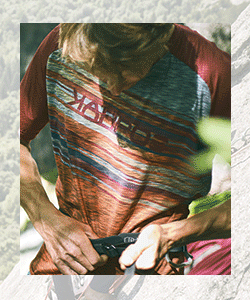How to do onearm pull-ups: the quest for climbing’s Grail

You’ve probably already seen videos of pro climbers doing a bunch of onearm pull-ups. And making it look easy. Among the most impressive of these are the French boulderer Mickael Mawem, and his brother Bassa, who seem to have mastered this particular art! La Fabrique verticale gives you a few tips on how to copy them …
Onearm pull-ups are a difficult exercise to master. Not everybody’s up to it. And it can take several months of training to get there. So you’ll need to be patient. It takes a lot of strength (in the biceps, the triceps and the dorsals). But also a good strength-to-weight ratio, coordination and a lot of explosivity. A onearm pull-up is, for many climbers, an objective in itself!
Of course there is the question ‘is it really a good idea?’ Because more often than not there will be other things you can improve on a technical or gestural level, before embarking on this quest! Having said that, developing your strength qualities is never a waste of time for a climber. And even if you don’t get to the precious Grail, that famous onearm pull-up, you’ll still have muscle gain to show for your pains. Which in turn will mean more efficiency in the more physical moves.
It is however worth pointing out that a onearm pull-up should in no way replace real climbing. Or developing your gestural efficiency or your arm/leg coordination. It is more the sort of thing that experienced climbers might try, if they have reached a plateau in developing their strength, especially in bouldering, and have a (relative) weakness in their arms, compared to their finger or core strength.
9 steps to the Grail
Two-arm pull-ups
Before you start working on the single-arm version, make sure you are sufficiently good at the two-arm pull-up on a bar, with pronated hands. In other words, with the palms facing forwards, not towards you. Ideally, you should be able to do 20 or so in a row without too much difficulty. If this isn’t the case, the single-arm pull-up is probably a little too ambitious a project for now …
Weighted two-arm pull-ups
If you’ve mastered the two-arm pull-up and can do about 20 of them, you can try weighing yourself down, or using the high pulley in a training gym. It’s easier to dose the weights and will enable you to work in your optimum range, i.e. 1 to 5 MR (maximum repetitions). The number of MR is the maximum possible number of repetitions for a given weight-load.
Two-arm pull-ups, favouring one arm
On a bar (or a fingerboard using the jug holds), perform your two-arm pull-ups but giving priority to one of the arms. To do so, you need to shift your centre of gravity over the arm you want to work on, and pull up harder on this one (the other arm is only used as an extra point of contact). The further apart your hands are, the harder the exercise.

Onearm pull-up, hand on wrist
A first step towards a onearm pull-up is to pull up with only one hand on the bar, while the other hand holds your wrist, and therefore helps you up. Start with a supinated hand on the bar (i.e. with your palm facing you). Then once you get the hang of that, go for pronation (palm facing away). The exercise can be made harder by bringing the ‘helping hand’ down to the forearm instead of the wrist.

Two-arm pull-up, with asymmetric hands
The next step, if you’ve mastered the onearm pull-up with the other hand on your wrist or forearm, is to bring your ‘helping hand’ down as far as possible. This can be done on the wide slats on a campus board. Place your hands at different heights, and further and further apart as you progress. Another possibility is to use gym rings at different heights, so you can pull up with the upper arm while helping yourself with the lower hand. On the bar, you can also use a lanyard to help with the lower hand, adjusting the height of the lanyard to your level of strength.

Onearm descent
Do a two-arm pull-up, and lock off as hard as possible, with your chin above the bar. Then let go of one hand. And fight as hard as you can against the inevitable descent. Make sure you control the movement though! This type of eccentric exercise is really good for gaining arm strength. But it can be very hard on the elbows!
Assisted pull-up
Using elastic bands (or a pulley or a counterweight) to “make yourself lighter”, perform an assisted one-arm pull-up. The lighter weight will make the movement easier, but help you to introduce the right coordination in your movements. In losing some of your body weight, you will gradually gain in strength through this movement. And as you progress, session by session, you can gradually “lose” less and less weight, until you reach your full body weight.
This exercise can also be done at a gym, using the high pulley, using a handle instead of the bar, and doing max series with one arm (again, in the 1 to 5 MR bracket).

The half pull-up
Once you notice you no longer need a counterweight to lessen your body weight, you can try to perform only part of the pull-up. We’ll call this the half pull-up. Upper or lower. For the upper half pull-up, for example, start off with a 90° lock-off with both hands on the bar. Then let go of one arm and finish the pull-up with the other arm. Gradually, start off lower and lower. And make a note of the critical angle. So that you can work specifically on that, using elastics or counterweights.
The jump start
The last step before the Grail! With both feet on the ground and one hand on the bar, hold the other hand out in front of you (for balance, and to give some inertia to the movement). Jump up, pushing down hard on your legs to give yourself some speed. Start the pull-up, ending up without your feet. The start is the critical angle to get over in a one-arm pull-up. So with the jump start, you’re skipping the hardest part. Gradually, reduce the push you give at the start. In order to minimise the impact. And then maybe you’ll be able to de the one-arm pull-up ‘properly’, starting with your feet off the ground, like the Mawem brothers!
See also tips to prevent and correct muscle imbalances here










